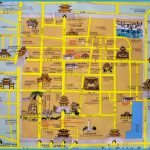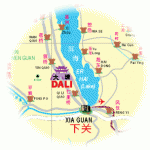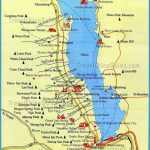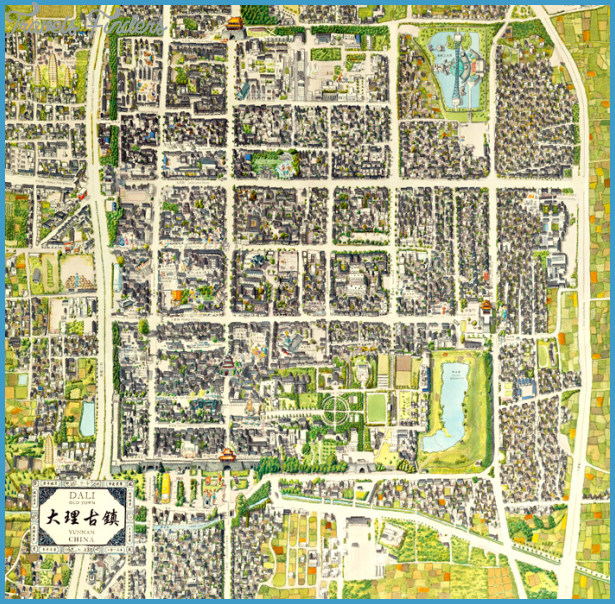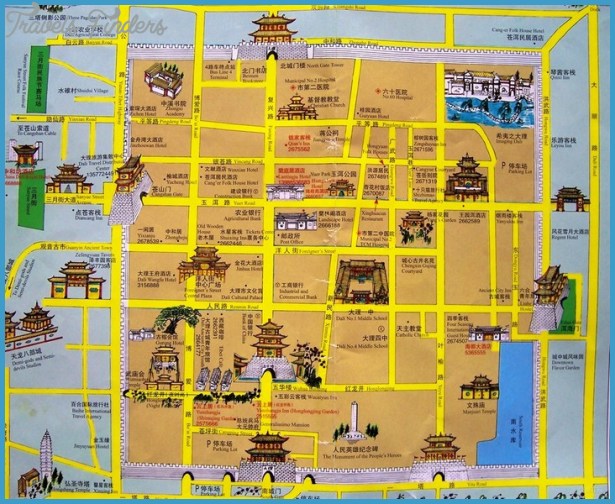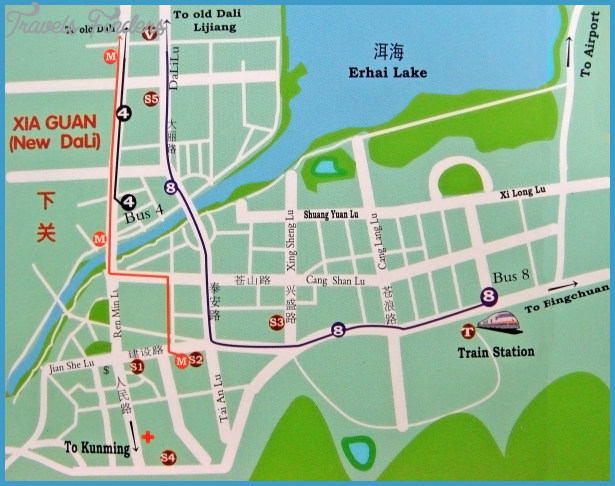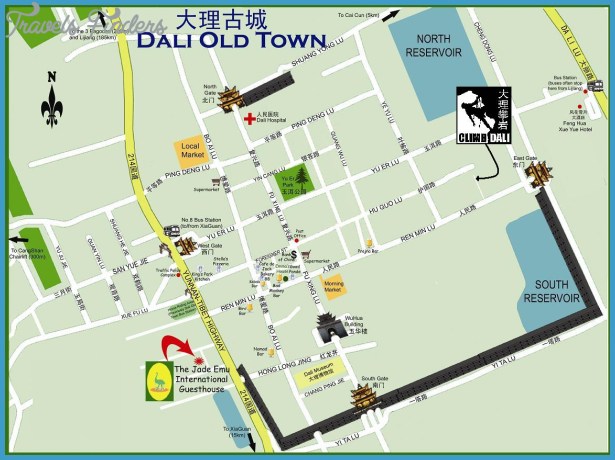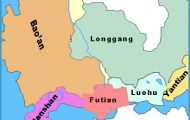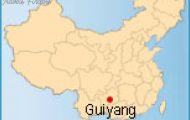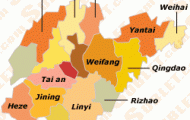Chinese equivalent Situation and Communications
Province: Yunnan
Altitude: 1980m/6500ft. Population: 2,500,000
Dali lies at 100°12’E and 25°37’N, about 400km/250 miles north-west ofthe provincial capital of Kunming with which it is linked by rail and overland buses.
Dali forms part of the autonomous region inhabited by the Bai minority, who form the bulk of the population. Dali is known both for its places of interest and for its lucrative marble deposits. The marble quarried here is known as “Dali Stone”.
Dali’s origins lie in the dim and distant past. All that is known is that it was the capital ofthe Nanzhao kingdom (738-902), when it was called Taihe. For centuries it was an important trading hub. During the Song period (960 1279) an independent kingdom existed here with the name of Dali. At times during the 13th c. it came under the rule of the Mongols.
The Sanyue Jie Festival – an open-air market which has been organised by the Bai in the west of Dali for more than 1000 years – is held annually on the 15th day of the third month (hence its name) and usually lasts for between five and seven days. Other national minorities, many of whom travel here from far afield, also take part wearing their festive costumes.
This festival was first held in the Tang era (618-907) in honour of Gua-nyin, the Goddess of Mercy, which is why it is sometimes called the Guanyin Jie. Everything imaginable is offered for sale on the richly stocked stalls, ranging from conventional medicines to everyday objects and even horses, while the people enjoy singing, dancing and various contests such as horse-racing and longship races.
Erhai means “Ear Sea”. This name can be explained both by the size ofthe lake – it measures 7km/4i4 miles wide and some 40km/65 miles long and covers an area of 250sq.km/96sq. miles – and by its shape, which resembles a human ear. This beautiful lake, situated 2km/11/4 miles east of the town centre, bears eloquent witness to Dali’s glorious past. There are a number of old buildings to visit on an island inthe lakeand along its banks.
Unfortunately little remains of the former residence ofthe King of Nanzhao (Nanzhao Bishugong) on the little Isle ofthe Golden Spindle (Jinsuo).
The ruins of the ancient town of Taihe (see History above) can be seen on the west bank of Lake Erhai; these include two walls of rammed-down clay 1 -5 and 2km/1600 to 2100yd long respectively, a fort built in 747 and a stone tablet 3-02m/10ft high, 2-27m/71/2ft wide and 58cm/2ft thick which dates from 766. The inscription chiselled on the tablet describes a battle and the relationship between the kingdom of Nanzhao and the rulers ofthe Tang dynasty.
The Temple ofthe Exalted Holy One, also known as the Temple ofthe Three Pagodas (Santa Si), stands on the west bank of Lake Erhai. It is known mainly for its three pagodas. The largest of these, the Pagoda of the Thousand Searches (Qianxun Ta), a rectangular building of sixteen stepped storeys, stands 69m/226ft high and is very similar to the Pagoda ofthe Little Wild Goose in Xian. There are some doubts as to when it was built, although most experts now think it was in the third decade of the 9th c. In the centre of the front of each storey there is a niche containing a marble statue ofthe Buddha.
Thetwo smaller pagodasareto the north and south ofthe large one. Both are octagonal and often stepped storeys, are 42m/138ft high and date from the time of the Five Dynasties (907-960).
When renovation work was carried out in 1978 large numbers of historically interesting objects were discovered in the foundations and upper structure of the pagodas.
Behind the pagodas lies the Hall ofYutong Guanyin Dian, which houses a particularly interesting bronze statue of the Buddha and a marble stele (1325).
The Cangshan mountain range west of Dali stretches for more than 50km/30 miles from north to south and contains a lot of marble quarries. Its nineteen peaks are all over 3000m/9,900ft, the highest being Mount Malong, which is 4122m/13,530ft. Between the peaks mountain streams gurgle their way down to Lake Erhai. Those interested in nature will be amply rewarded by the “Four Beauties” of the Cangshan mountains -clouds, snow, peaks and streams.
5km/3 miles south of Dali stands Guanyin Tang, dating from the Qing period (1644-1911) and dedicated to Guanyin, Goddess of Mercy. According to legend she, dressed as an old woman and with a giant stone on her back, faced an enemy army and put it to flight.
Also some 5km/3 miles south of the town stands the Gantong Si temple, dating from the Eastern Flan period (24-220) but renovated by the Mings (1368-1644).


